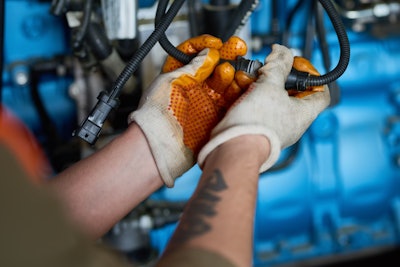
When it comes to digital transformation, organizations’ evolution may vary due to industry complexities, the availability of supportive technology, process sophistication and a host of other factors. Regardless of the industry, workplace safety is a component of most company operations where digital transformation has been more challenging to realize. Even some of the most digitally advanced organizations have been slow to adapt to newer technologies where safety is concerned, even though the benefits of connected, data-driven safety systems are fairly well-accepted.
The fact of the matter is that most safety programs are still based on historical, top-down data and paper processes. Although knowledge of past incidents and accident prevention practices based on that knowledge are important, this traditional approach has plateaued in terms of improvements to safety metrics and return on investment. Even organizations with a strong safety culture still face challenges engaging workers in their own safety, let alone providing managers with the right information to enable preemptive safety processes.
Part of the issue is that until now, the technology to realize proactive, worker-powered safety programs has not been available. Although sensors, cameras and other tools have been used for quite some time, the piece that’s been missing is worker engagement.
In today’s digital age, the emphasis on technology, while important, sometimes overshadows a company’s most valuable resource – its people. Devices that simply record and monitor activity can create a false sense of security, leading some to assume that technology alone is enough to create a safer environment. It’s true that improvements to safety can happen by introducing safety measures like sensors and PPE, but the human factor is critical for a safety ecosystem to offer maximum ROI and more importantly, greater protection for every worker.
Although IoT technologies have entered the mindset of management in terms of safety, truly connected safety strategies must include real-time data that can be incorporated into important decisions now. The answer is to connect not only the devices, but also the workers.
Sensors, smart technologies and PPE have come a long way toward protecting workers, but an engaged workforce is perhaps the most powerful tool available. How much more engaged will a worker be knowing he or she can report a problem right away that could prevent an immediate injury? When workers are equipped with real-time communication devices as part of an overall safety strategy, our projects have shown time and again an immediate, enthusiastic response to becoming part of the safety solution.
Safety in Every Worker’s Hands
When workers are brought in as a key part of a safety strategy and given the ability to communicate and report potential problems in real-time, engagement increases dramatically. People feel a sense of ownership of their own safety and that of their co-workers. The feeling that they can make a difference right now encourages them to be proactive in that very moment – if not protective. As a result, not only will workplace safety metrics improve, positive ROI can be achieved more rapidly.
Workers in Corvex pilot projects given handheld devices connected to an overall safety information system have unilaterally accepted the new safety protocols. Although we expected that digitally savvy millennials would embrace the technology, even older workers responded positively to using the devices. Workers responded to technology that replaces a paper process with a tool that captures a safety hazard, reports it and can realize improvements in a rapid fashion.
Digital transformation in a safety system differs from other processes in that even the smallest incremental change can make a huge difference, and high-risk areas are a good place to start. Every time a potential risk or unsafe working condition is reported and the workplace is made safer, workers increasingly take ownership of safety, strengthening the overall safety culture.
An important part of digital transformation is not only how it can make existing processes more efficient within safety and every other operation within the enterprise, but how data can be used to improve those operations in the future. IoT technology combined with sophisticated data analytics derived from a connected safety system can provide safety managers with the predictive capability to prevent incidents well into the future. This not only reduces harm to workers, it can reduce financial, reputational and other risks that arise from workplace accidents and injuries.
Ted Smith is the CEO and President of Corvex Connected Safety.






















